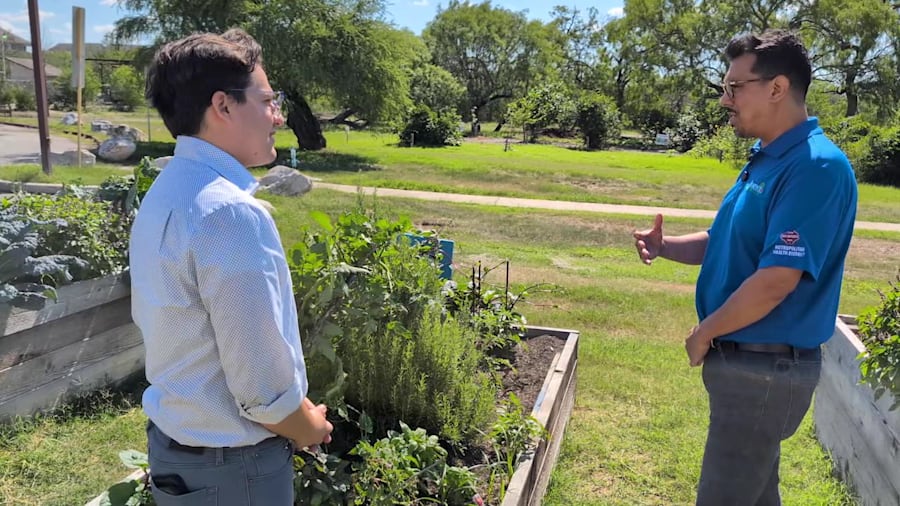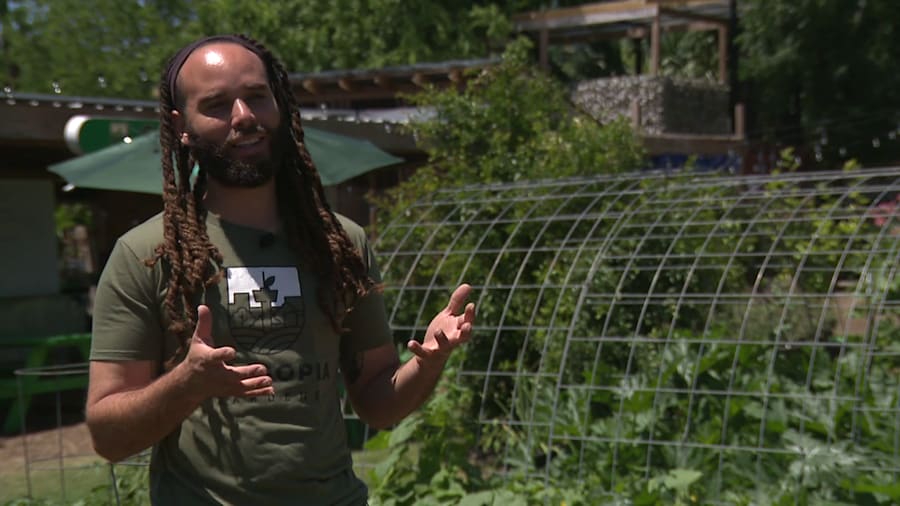SAN ANTONIO – Food deserts are not a new problem in San Antonio.
In 2015, the City of San Antonio and Metro Health said 28% of people in town live in one.
The term refers to areas where residents live close to processed food options but far away from healthy, accessible groceries.
KSAT recently explored these neighborhoods, visiting various food deserts and discovering individuals working to bring fresh produce to those in need.
A personal journey through food deserts
In 2023, Roger Morales bought a house in the Mission del Lago neighborhood, coming from the Southeast Side of San Antonio.
For Morales, there’s nothing better than shooting hoops and cooking a meal afterwards. However, the round-trip journey to pick up groceries can take more than an hour.
“And then especially if you hit traffic or whatever, you’re like, ‘Oh man, I didn’t know it was gonna take this long. It’s like I don’t even feel like doing it no more (sic),’” Morales said.
In a city where healthy groceries are scarce but fast, processed food is abundant, many residents may find themselves in food deserts.
Community efforts to combat food deserts
Morales is not alone. Metro Health, the City of San Antonio, the San Antonio Food Bank and community nonprofits said they have all recognized the food desert problem.
“Going to traditional grocery stores was a treat. It was a Sunday treat because it was so far at the time,” South Side resident Daniel Jimenez said. “What we did, what the community still does, a lot of them grow their own food in their backyards. Mom-and-pop stores popped up all throughout these neighborhoods. Unfortunately, those mom-and-pop stories no longer exist.”
Jimenez now works as the Special Projects Coordinator with the Healthy Neighborhoods program, a joint effort from the City of San Antonio and Metro Health to address food deserts in the city.

Jimenez said the Resource Center at Villa Coronado is less than a mile from where he grew up, and he wishes the community had had the resources when he was younger.
“We get our produce via the Healthy Corner Stores program and one of our amazing partners, River City Produce,” Jimenez said. “Our aim is to offer 10 fresh fruits and vegetables, a different variety every week.”
The Resource Center at Villa Coronado offers free weekly food, educational classes, baby supplies, supplies for new mothers and a garden outside where neighbors can grow their produce.
“We live in a resource desert where it’s linked to high rates of diabetes,” Jimenez said. “And we can promote and help educate residents. Maybe, how can kale taste good? Or to a kid, how can basil taste good in water or lemonade rather than processed sugars?”
Gardening as a solution
Growing gardens is something Stephen Lucke, founder of the East Side nonprofit Gardopia Gardens, loved doing in his free time before dedicating himself to doing for his community.
”What we’re trying to do is reintroduce people to healthy food by having them grow the food,” Lucke said. “Because when you pick that apple or when you pick that Swiss chard, when you pick that grape, or when you pick that blackberry off the vine, then you can actually reinvigorate and catalyze change.”

Gardopia has helped build more than 60 community gardens in schools around San Antonio and 10 larger gardens in community and church centers.
Lucke said taking advantage of the San Antonio sun can be a huge start towards transforming into a self-producing food city.
“It seems like you can do a lot with a little, right?” Lucke said.
The Healthy Neighborhood Program is free for residents. Anyone can visit a resource center to receive food, recipe information and details on when they can return.
More recent local health coverage on KSAT:


